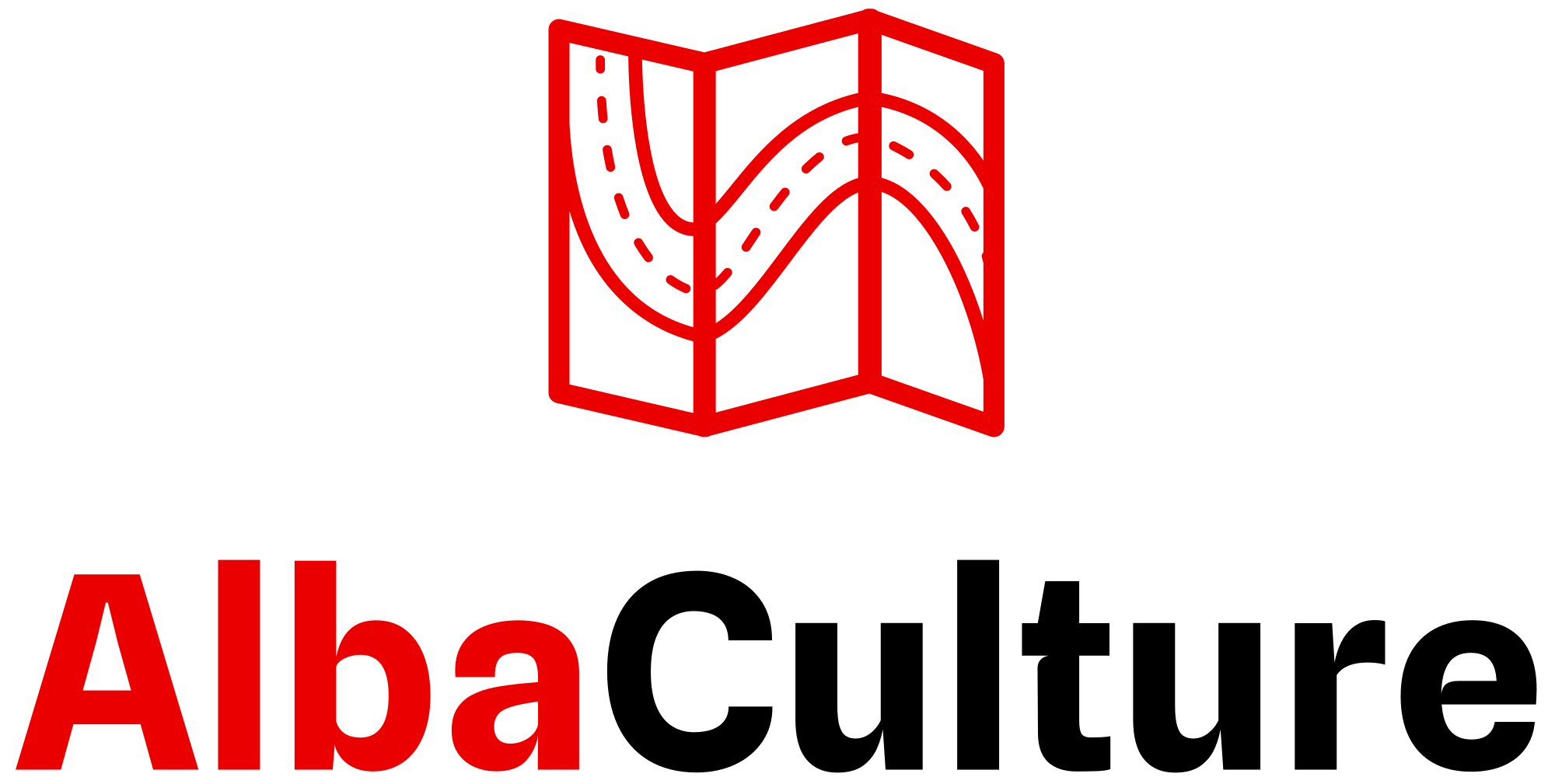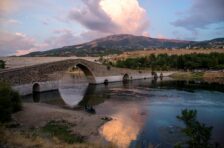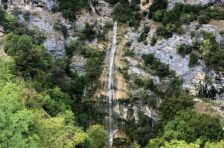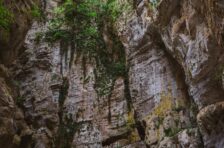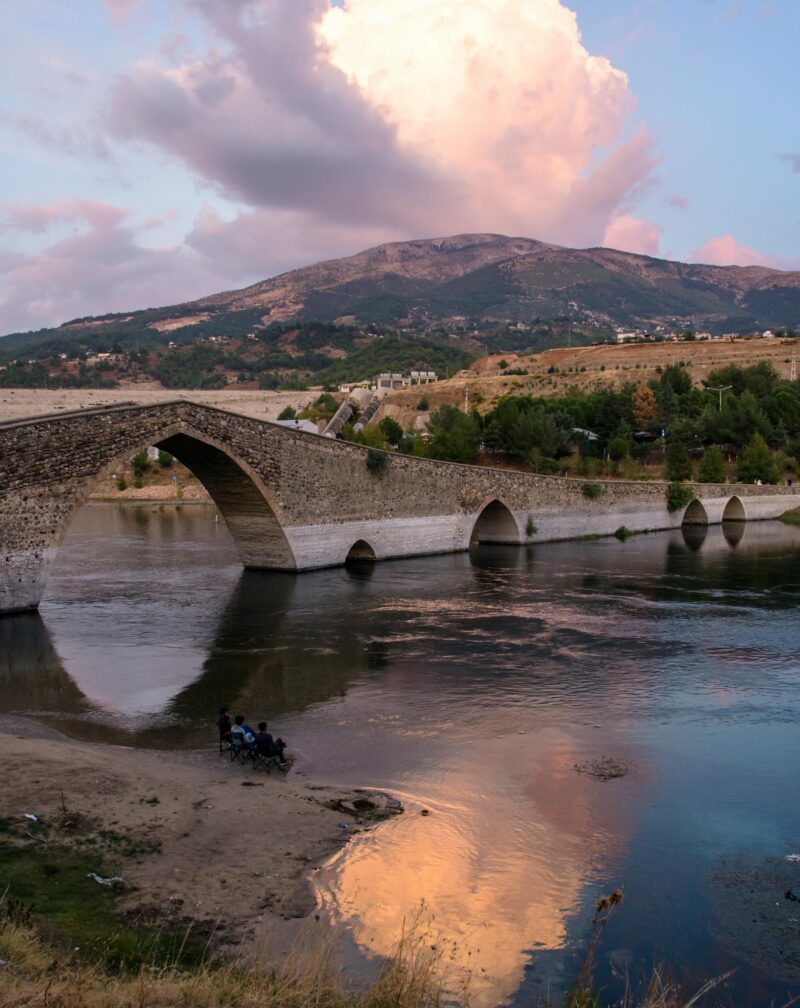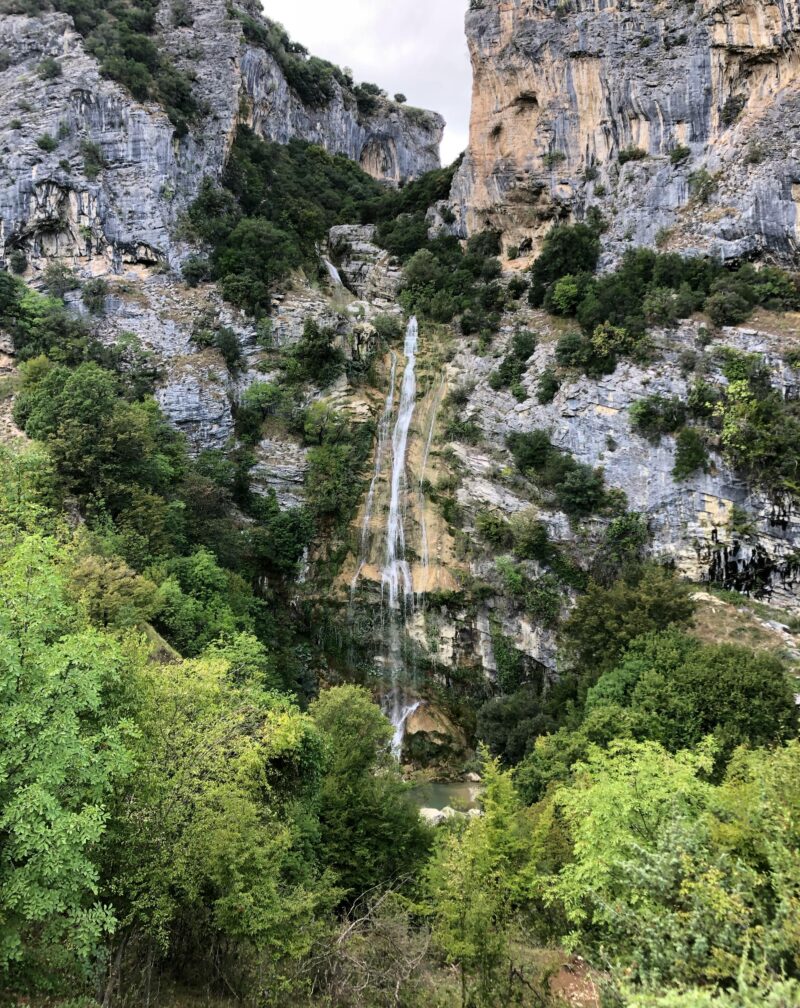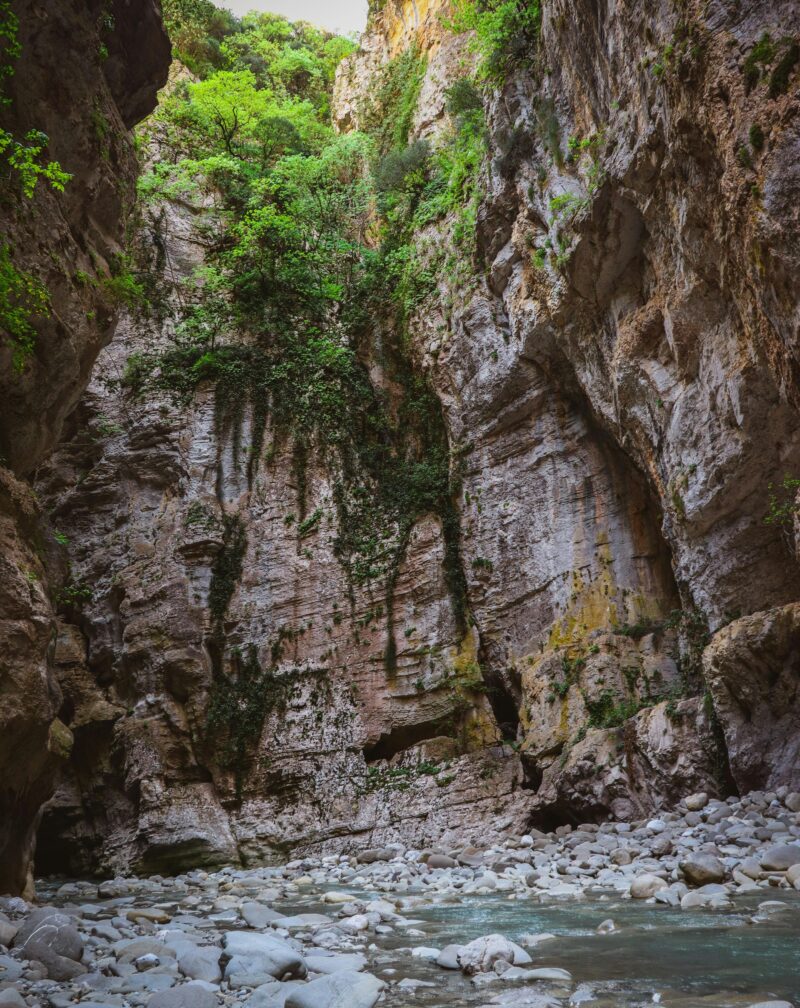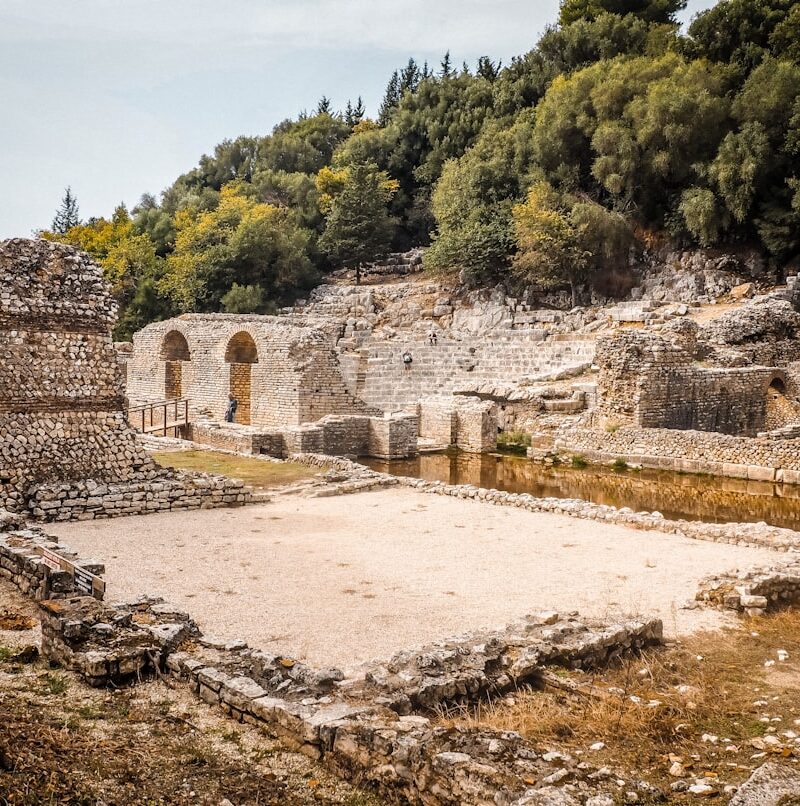The Cultural Capital of the North
Shkodër doesn’t immediately stun you the way Berat or Gjirokastër do. There’s no single dramatic feature dominating the skyline. Instead, Shkodër reveals itself gradually—through café culture, through the pride locals take in their city, through the mixture of old and new, through its position as gateway to both Lake Shkodra and the northern mountains.
It’s Albania’s fourth-largest city but feels more manageable than Tirana or Durrës. People here are proud of Shkodër’s reputation as Albania’s cultural and intellectual heart—the first Albanian-language publications, important role in national resistance, continuing traditions of education and arts.
Rozafa Castle
The fortress sits on a rocky hill at the confluence of Buna and Drin rivers, about 3 kilometers from the city center. You’ll need a taxi, bike, or a lengthy walk to reach it.
The castle dates to Illyrian times (4th century BC) with successive civilizations adding their marks—Romans, Byzantines, Venetians, Ottomans. What you see represents layers of 2,400 years.
The legend of Rozafa explains the castle’s name with tragic story: Three brothers-built walls that kept collapsing each night. A wise man suggested a human sacrifice—one of their wives walled alive. Rozafa, the youngest brother’s wife, agreed on condition that openings be left for her breast to nurse her infant, her eye to see him, her hand to caress him. Supposedly her milk still seeps through stones.
It’s dark legend, but Albanians know it and tell it to explain the castle’s name. Whether it reflects ancient practices or is pure mythology remains debated.
Walking the castle reveals:
- Massive walls with different construction styles showing various periods
- Church ruins from Byzantine era
- Mosque remains from Ottoman period
- Museum with archaeological finds and historical displays
- Water cisterns that supplied fortress during sieges
- Towers providing 360-degree views
The views are Rozafa’s main draw. You see Lake Shkodra spreading vast and blue, rivers converging, city spread below, mountains of both Albania and Montenegro. On clear days, the Adriatic is visible.
Different times of day offer different light. Sunset is popular but midday can be equally impressive.
Entry costs around 200 lek. Castle is open daily, typically 8 AM to sunset.
Pedestrian Street (Kol Idromeno Street)
This is Shkodër’s social center—pedestrian boulevard lined with cafes, shops, restored buildings from various eras (Ottoman, Italian occupation, communist, modern).
The corso tradition thrives here. Evenings, particularly weekends, families stroll, friends meet, couples walk, teenagers gather. It’s a social ritual—seeing and being seen, maintaining connections, participating in community life.
Cafes spill onto sidewalks. People sit for hours over a single coffee, conversing, observing. This is where Shkodër’s famous café culture manifests. Join it—order macchiato, sit outside, watch the world pass.
The street leads to the main square where several important buildings cluster.
Marubi National Photography Museum
This museum houses extraordinary collection—oldest photographic archive in the Balkans, documenting Albanian life from 1858 to 1970s.
The Marubi dynasty—three generations of photographers—created visual record of Albania through massive changes. Pjetër Marubi (Italian who settled in Shkodër), his adopted son Kel, and Kel’s son Gegë photographed everything: portraits, landscapes, daily life, historical events, weddings, funerals, markets, ceremonies.
The collection includes over 500,000 negatives. Seeing Albania through these images—Ottoman era clothing, early 20th century streets, Italian occupation, communist transformation—provides historical understanding no written text can match.
The museum is beautifully curated. Photos are displayed with context. You can spend hours absorbing details—faces, clothing, architecture, tools, all preserved photographically.
For anyone interested in photography, history, or Albanian culture, this is essential visit. Even casual visitors find it compelling.
Entry around 200 lek. Open daily except Mondays typically. Allow 1-2 hours minimum.
Shkodër Cathedral (St. Stephen’s Cathedral)
The Catholic cathedral represents Shkodër’s role as Albania’s Catholic stronghold. The current building dates from 1858, though it was destroyed during communist religious persecution and rebuilt after 1991.
The destruction and resurrection story is significant. During the atheism campaign, the regime demolished the cathedral in 1967. For over two decades, the site remained empty erasure of religious identity.
Rebuilding began in 1990s, funded by Albanian diaspora and international Catholic community. Reopening in 1991 symbolized religious freedom’s return.
The neo-Romanesque architecture is impressive without being grandiose. Inside, the space feels peaceful, light streaming through windows.
Attending Sunday mass provides insight into Albanian Catholic practice. The congregation is devout, service is traditional, and the atmosphere is reverent.
Ebu Beker Mosque (Great Mosque)
Ottoman-era Mosque from 1773, this was one of the Balkans’ largest when built. Like the cathedral, it was destroyed during communism and rebuilt post-1991.
The current structure opened 1994, reconstructing the original design. The mosque serves Shkodër’s Muslim community actively.
Visitors welcome outside prayer times. Remove shoes, dress modestly, women may need head covering. The interior is elegant—carpet, chandeliers, mihrab (prayer niche), dome creating acoustic resonance for call to prayer.
Lead Mosque (Xhamia e Plumbit)
Older mosque from 18th century in old town. Smaller, more intimate than Ebu Beker. The name comes from the lead-covered dome.
It’s not always open but exterior shows classical Ottoman Mosque design. The neighborhood around it preserves old Shkodër character—narrow lanes, traditional houses, less tourism.
Site of Witness Museum (Dëshmorët e Kombit)
Powerful museum documenting religious persecution under communism. Shkodër, being Catholic center, faced particularly brutal suppression.
Exhibits show:
- Photos and biographies of religious martyrs—priests, nuns, believers executed or imprisoned
- Testimony from survivors
- Artifacts from destroyed churches
- Documentation of atheism campaign
- Personal stories of faith maintained secretly
It’s emotionally heavy. The scale of persecution—hundreds killed, thousands imprisoned for religious belief—is staggering.
The museum doesn’t shy from showing the regime’s cruelty. Some visitors find it too intense. Others feel it’s necessary to witness what occurred.
Entry is usually free or a small donation is requested. Allow 1 hour. Be prepared for difficult content.
Mesi Bridge
About 8 kilometers from Shkodër, this Ottoman stone bridge dates from 1768. It crosses Kir River with series of arches, beautifully proportioned and picturesque.
The bridge is photogenic—old stone, river flowing beneath, mountains in background. It’s reached by taxi or bike. Some tour companies include it in Shkodër area tours.
It’s pleasant half-day excursion if you have time and interest in Ottoman architecture. Not essential if your schedule is tight.
Venetian Mask Workshop
Shkodër has a unique tradition of Venetian-style mask making, brought by Venetian merchants and adapted locally. A workshop in the old town maintains this craft.
Visiting, you can:
- Watch artisan create masks using paper-mâché
- See painting and decoration process
- Try decorating your own mask (hands-on experience)
- Purchase finished masks directly from maker
It’s one of Albania’s most unique crafts—specifically Shkodër, nowhere else in the country has this tradition. Masks make distinctive souvenirs if you want something authentically Albanian and handmade.
The workshop doesn’t always have formal hours—calling ahead or asking at tourism office reveals current schedule.
Lake Shkodra
The largest lake in the Balkans (shared with Montenegro), Lake Shkodra dominates Shkodër’s geography and culture. The city has historically depended on the lake for fish, transport, and water.
Boat Trips Local operators offer boat tours on the lake. You’ll see:
- Vast water expanses (the lake is huge—390 square kilometers)
- Traditional fishing villages along shores
- Mountain backdrop
- Birdlife—pelicans, herons, cormorants, particularly during migration
Trips typically last 2-3 hours, cost 2,000-4,000 lek depending on boat size and duration.
Fishing Villages Villages like Shiroka or Zogaj maintain traditional fishing lifestyles. Boats line shores, nets dry in sun, fish are sold at small markets.
Visiting these villages (by boat or car) provides insight into lake-dependent life. Some family’s welcome visitors, showing fishing techniques and offering fresh fish.
Swimming Locals swim at certain lake spots during summer. Water quality varies—ask locally about the best swimming areas. It’s not pristine, but it’s acceptable and refreshing on hot days.
Cycling Trails circle portions of the lake. Renting bikes and riding lakeshore paths is a pleasant way to spend a few hours. Relatively flat terrain makes it accessible for casual cyclists.
Birdwatching Lake Shkodra is an important wetland habitat. Over 270 bird species have been recorded. Dalmatian pelicans breed here. Spring and fall migrations bring numerous species.
Serious birders bring binoculars and field guides. Casual observers still notice abundant bird life.
Day Trips from Shkodër
Theth Valley Northern Albanian Alps, about 3 hours on rough mountain road. Traditional mountain village with stone houses, kulla (tower houses), stunning scenery.
This is full-day excursion requiring 4WD (especially outside summer). Alternatively, organized tours operate from Shkodër.
Theth offers hiking, Blue Eye spring, waterfalls, and glimpse of highland life. It’s spectacular but requires commitment.
Koman Lake Ferry The scenic ferry through Koman reservoir takes 2-3 hours, winding through dramatic canyon. It’s day trip from Shkodër or starting point for northern explorations.
The ferry doesn’t run on fixed schedule—check current times and weather conditions.
Shkodër to Montenegro Border crossing is close—you can reach Montenegrin coast (Ulcinj) in under an hour. Good option if you’re doing multi-country Balkans trip.
Food in Shkodër
Shkodër’s cuisine includes:
Lake fish – koran (carp), trout, eel prepared various ways. Restaurants along lakefront specialize in fish.
Grilled meats – qebapa (small grilled sausages), qofte, various kebabs
Traditional soups and stews
Sweets – Shkodër is known for traditional Albanian sweets including various types of baklavas
Restaurants range from simple lakeside grills to nicer establishments in city center. Prices are moderate—800-1,500 lek for mains typically.
Practical Information
Getting There:
- From Tirana: 1.5-2 hours by bus (400-500 lek) or 1 hour by car
- From Montenegro (Ulcinj): 1 hour
- From Kosovo: 3-4 hours depending on route
Getting Around: City center is compact and walkable. Taxis are cheap for reaching castle or lake areas. Bike rental is available and Shkodër’s relatively flat terrain makes cycling pleasant.
Where to Stay: Hotels and guesthouses range from budget to upscale. The city has more accommodation options than most Albanian cities outside Tirana and coastal areas.
How Long: One night (one full day) covers main city attractions. Two nights allows lake activities and a relaxed pace. Three nights enables a day trip to Theth or extensive lake exploration.
When to Visit: April-October ideal. Summer brings heat but the lake provides relief. Spring and fall have pleasant temperatures. Winter is cold but gives authentic experience minus tourists.
The Shkodër Spirit
Shkodër has a distinct personality. People here are proud—of their city’s history, cultural contributions, resistance to various occupiers, intellectual traditions.
This pride isn’t arrogant. It’s quiet confidence. Shkodrans (as residents call themselves) know their city mattered historically and continues mattering culturally.
The café culture is genuine, not performance. Albanians from other regions acknowledge that Shkodër does coffee culture better—cafes are social institutions, not just places to caffeinate.
Religious tolerance is visible. Catholic cathedral and large mosque sit near each other. Interfaith marriages are common. The city weathered communist religious persecution and emerged maintaining plural identity.
The city feels more cosmopolitan than its size suggests. Perhaps proximity to Montenegro, perhaps historical trade connections, perhaps simply that Shkodër has always been outward-looking rather than insular.
It’s not as photogenic as Berat or Gjirokastër. There’s no single stunning vista that defines it. But Shkodër grows on visitors who spend time there. The pieces—castle views, lake expanse, photo museum, café life, friendly people, mountain backdrop—accumulate into something compelling.
Many travelers use Shkodër as waypoint between Tirana and Montenegro or as base for northern mountains. Those who give it time often wish they’d allocated more days. It’s that kind of place—better experienced than rushed through.



